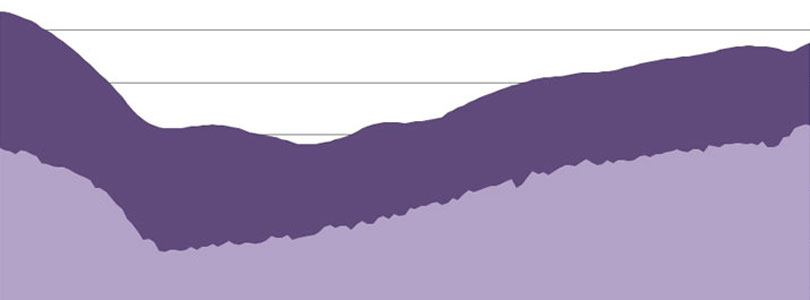September 2019 Employment: Slipping on the National Wave
The employment dip that plagued Rhode Island during spring reversed during the summer, but the Ocean State is still experiencing achingly slow recovery from a 12-year-old recession and losing ground compared with the rest of the country. Considering the annual revisions the Bureau of Labor Statistics (BLS) applies to its estimates every January, one could reasonably expect the following chart eventually to lose the drama in 2019 and just show low-to-no change over the year.
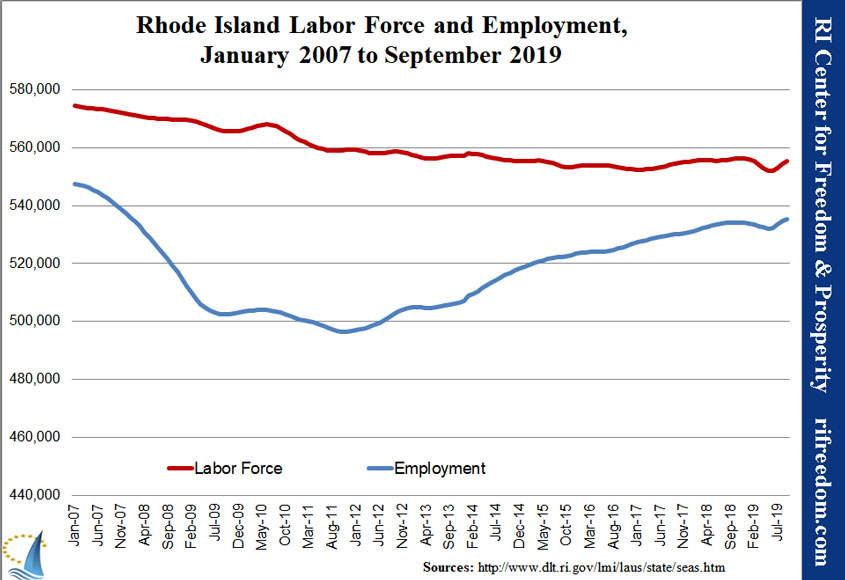
The slow growth of employment combined with the slow reduction in the labor force makes Rhode Island’s unemployment rate misleading. The blue line in the following chart shows the strong improvement of the official rate over the years, whereas the red line shows what it would have been had Rhode Islanders not stopped looking for work. In that case, the rate would not be 3.6%, but 6.9%.
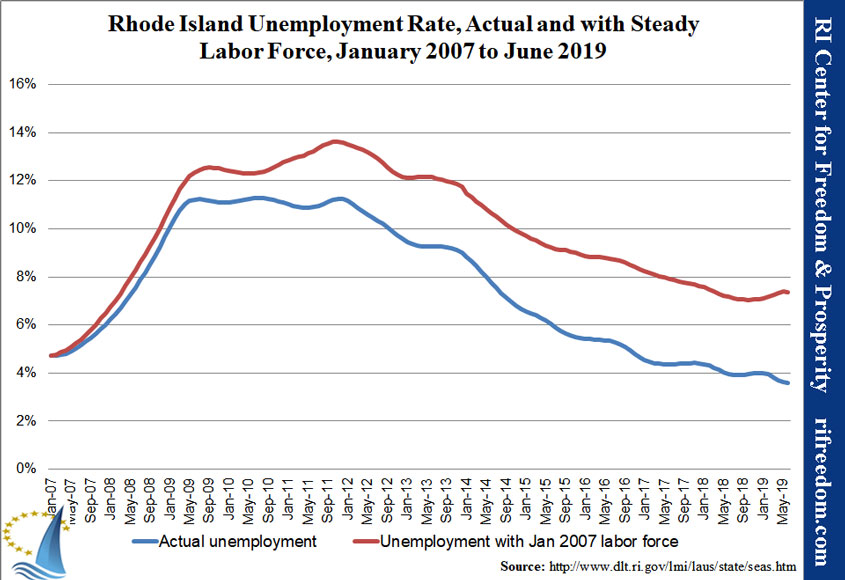
Putting Rhode Island in the context of its neighbors shows that the dip and recovery of 2019 were not unique to the Ocean State. Of course, both Massachusetts and Connecticut have been able to boast employment and labor force recovery after the 2007 recession for quite a while. This chart puts claims about a strong economy in Rhode Island in some perspective.

And speaking of perspective, a national comparison of states’ employment relative to its peak prior to the recession offers even more. Rhode Island is still among a handful of states that have not recovered their lost employment and, in fact, remains in the bottom three. This compares most dramatically with Texas, which has grown employment by more than one-fifth above its pre-recession peak.
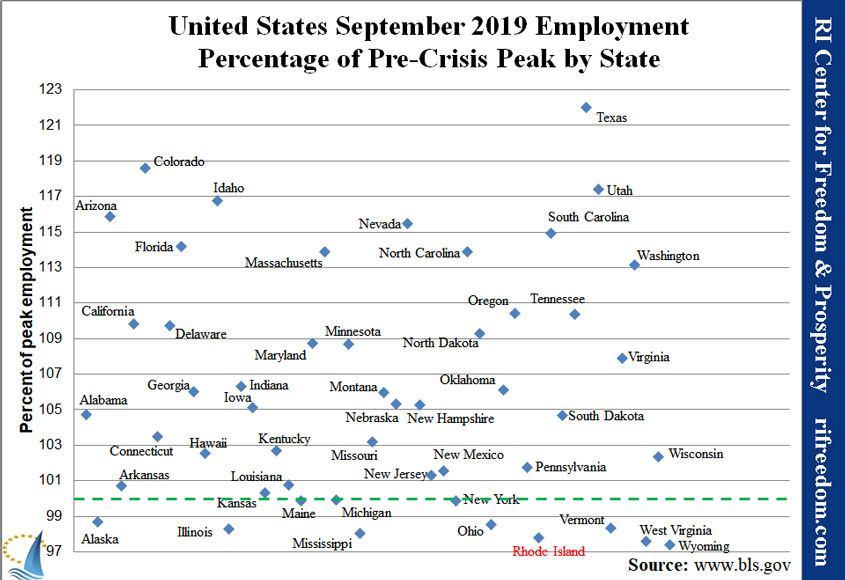
Comparing employment and jobs in Rhode Island evinces a need for many months, even years, of strong growth before optimism would be justified. Employment is the number of Rhode Islanders who say that they are working, while jobs is the number of people working for somebody else within the state, and while recent upticks are better than the alternative, no evidence can yet be provided that the Ocean State has broken the long trend of slow-to-no growth that began with the end of the recession and really settled in with the election of Governor Gina Raimondo.
[box type=”tick” style=”rounded”]Please consider a voluntary, tax-deductible subscription to keep the Current growing and free.[/box]
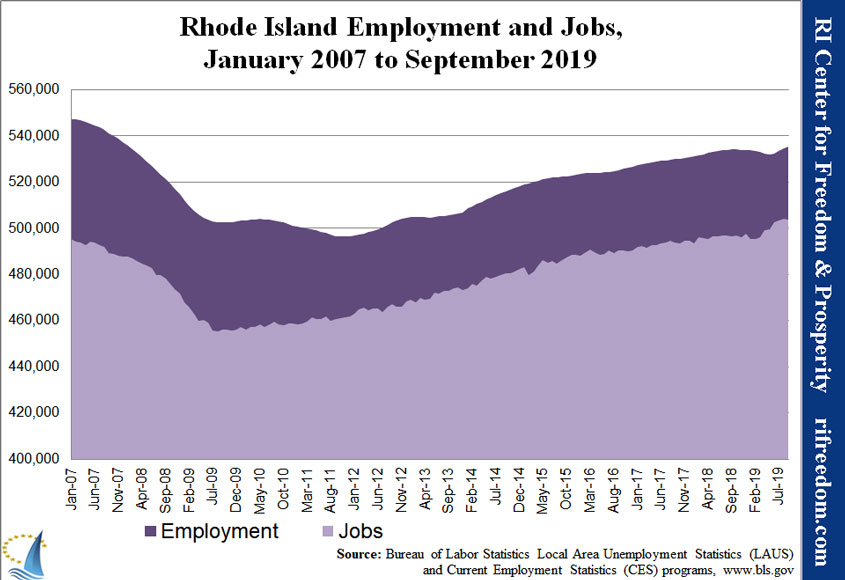
The RI Center for Freedom & Prosperity’s Jobs & Opportunity Index (JOI) reinforces this more-skeptical view. Although most of the 12 data points moved in a positive direction since the report for the prior quarter, the same is true (and then some) for every other state. Consequently, Rhode Island remains mired in 47th place, essentially tied with the 48th place Louisiana. The Ocean State has not had a better rank than 47th since 2011 and shows no sign of moving back toward the 42nd place rank it held before the recession.


